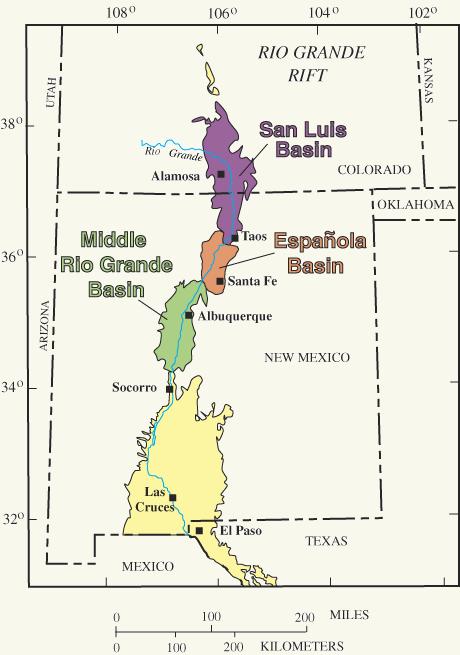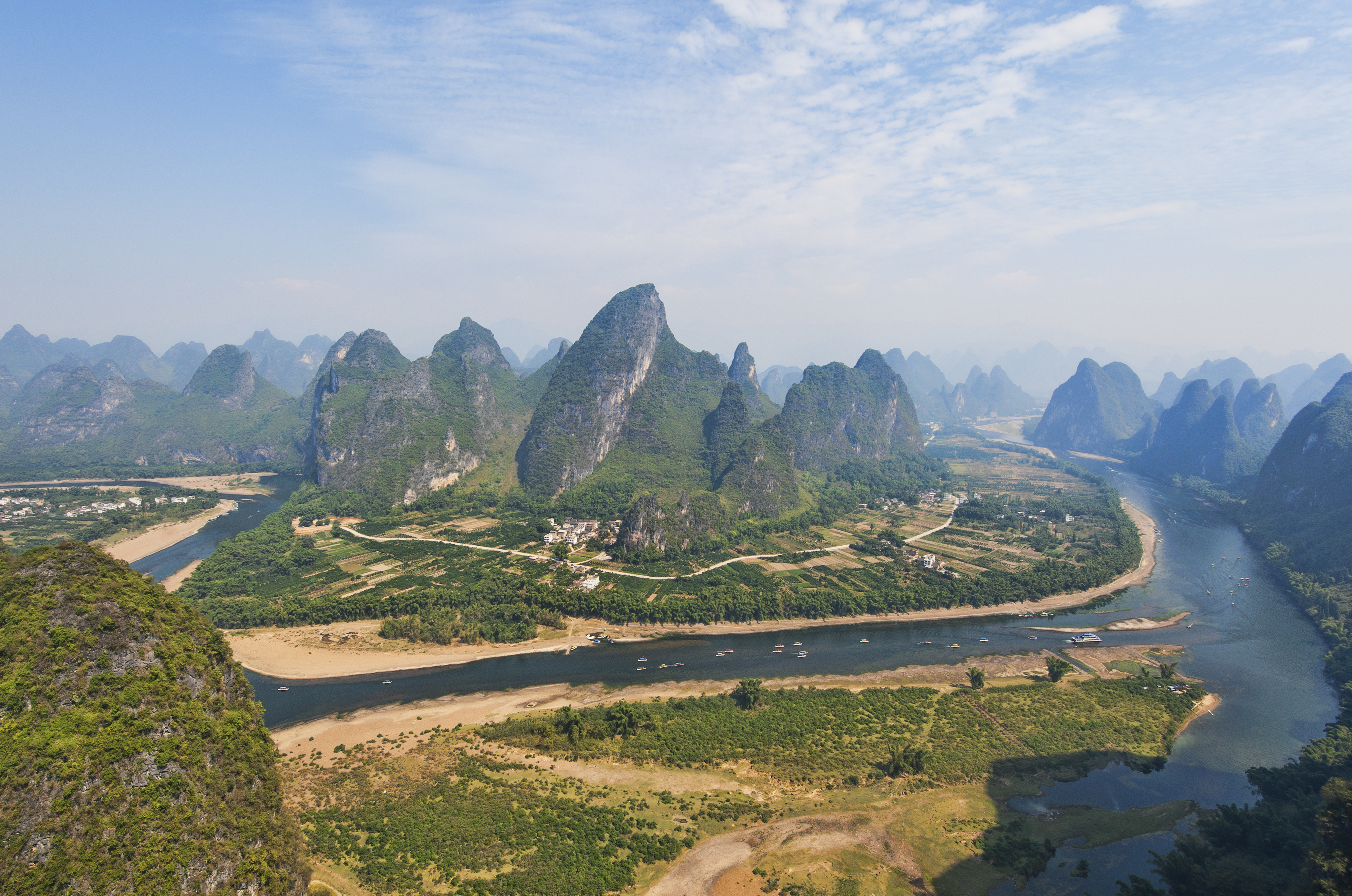|
Mescalero Escarpment
The Mescalero Ridge forms the western edge of the great Llano Estacado, a vast plateau or tableland in the southwestern United States in New Mexico and Texas. It is the western equivalent of the Caprock Escarpment, which defines the eastern edge of the Llano Estacado. Mescalero Sands Extending north-south along the western edge of the Mescalero Ridge lies a vast sand sheet called the Mescalero Sands, named after the Mescalero Apaches who once hunted in these sandhills. In 1928, Nelson Horatio Darton of the United States Geological Survey observed: ŌĆ£On the east side of the Pecos Valley in southern New Mexico there are very extensive sand hills formed of deposits known as the ŌĆśMescalero Sands,ŌĆÖ which are doubtless of Quaternary age ...ŌĆØ In places, these sands climb up and over the Mescalero Ridge and spread out over portions of the Llano Estacado. The north dune is an off-road vehicle area. The south dune is a National Natural Landmark.https://www.nps.gov/subjects/nnland ... [...More Info...] [...Related Items...] OR: [Wikipedia] [Google] [Baidu] |
Caprock, New Mexico
Caprock is an unincorporated community in Lea County, New Mexico, United States. Caprock is located on a geological formation in the high plains, approximately east of Roswell. U.S. Route 380 passes through the community. It was founded by Edward Crossland, who planted the cottonwoods in the area, in 1913. A post office was established in 1916 but is closed. Caprock's school closed in 1927. Caprock today consists solely of a country store (without gasoline service), two ranches, and a TV transmission tower. Points of interest * KOBR-TV Tower KOBR-TV Tower (also called KSWS-TV Tower) is a high guy-wired aerial mast supporting the transmission antenna of television station KOBR in Caprock, New Mexico, United States. KOBR-TV Tower was built during 1960. The original KSWS-TV Tower was bu ... References Unincorporated communities in New Mexico Unincorporated communities in Lea County, New Mexico {{NewMexico-geo-stub ... [...More Info...] [...Related Items...] OR: [Wikipedia] [Google] [Baidu] |
United States Geological Survey
The United States Geological Survey (USGS), founded as the Geological Survey, is an agency of the U.S. Department of the Interior whose work spans the disciplines of biology, geography, geology, and hydrology. The agency was founded on March 3, 1879, to study the landscape of the United States, its natural resources, and the natural hazards that threaten it. The agency also makes maps of planets and moons, based on data from U.S. space probes. The sole scientific agency of the U.S. Department of the Interior, USGS is a fact-finding research organization with no regulatory responsibility. It is headquartered in Reston, Virginia, with major offices near Lakewood, Colorado; at the Denver Federal Center; and in NASA Research Park in California. In 2009, it employed about 8,670 people. The current motto of the USGS, in use since August 1997, is "science for a changing world". The agency's previous slogan, adopted on its hundredth anniversary, was "Earth Science in the Pub ... [...More Info...] [...Related Items...] OR: [Wikipedia] [Google] [Baidu] |
Landforms Of Texas
A landform is a land feature on the solid surface of the Earth or other planetary body. They may be natural or may be anthropogenic (caused or influenced by human activity). Landforms together make up a given terrain, and their arrangement in the landscape is known as topography. Landforms include hills, mountains, canyons, and valleys, as well as shoreline features such as bays, peninsulas, and seas, including submerged features such as mid-ocean ridges, volcanoes, and the great oceanic basins. Physical characteristics Landforms are categorized by characteristic physical attributes such as elevation, slope, orientation, structure stratification, rock exposure, and soil type. Gross physical features or landforms include intuitive elements such as berms, cliffs, hills, mounds, peninsulas, ridges, rivers, valleys, volcanoes, and numerous other structural and size-scaled (e.g. ponds vs. lakes, hills vs. mountains) elements including various kinds of inland and oceanic waterbodi ... [...More Info...] [...Related Items...] OR: [Wikipedia] [Google] [Baidu] |
Geology Of New Mexico
The geology of New Mexico includes bedrock exposures of four physiographic provinces, with ages ranging from almost 1800 million years (Ma (unit), Ma) to nearly the present day. Here the Great Plains, southern Rocky Mountains, Colorado Plateau, and Basin and Range Province, Basin and Range Provinces meet, giving the state great geologic diversity. The geologic history of the state began with its assembly during the Yavapai orogeny, Yavapai and Mazatzal orogeny, Mazatzal orogeny, orogenies 1750 to 1650 million years ago (Mya (unit), Mya). This was followed by 200 million years of tectonic quiescence that ended in the Picuris orogeny. This event transformed the New Mexico crust into mature continental crust. Over a thousand million years of tectonic quiescence followed, ending with the rise of the Ancestral Rocky Mountains in Pennsylvanian (geology), Pennsylvanian time, 300 Mya. The Permian and most of the Mesozoic were another interval of relative tectonic quiescence, where gradua ... [...More Info...] [...Related Items...] OR: [Wikipedia] [Google] [Baidu] |
Landforms Of New Mexico
A landform is a land feature on the solid surface of the Earth or other planetary body. They may be natural or may be anthropogenic (caused or influenced by human activity). Landforms together make up a given terrain, and their arrangement in the landscape is known as topography. Landforms include hills, mountains, canyons, and valleys, as well as shoreline features such as bays, peninsulas, and seas, including submerged features such as mid-ocean ridges, volcanoes, and the great oceanic basins. Physical characteristics Landforms are categorized by characteristic physical attributes such as elevation, slope, orientation, structure stratification, rock exposure, and soil type. Gross physical features or landforms include intuitive elements such as berms, cliffs, hills, mounds, peninsulas, ridges, rivers, valleys, volcanoes, and numerous other structural and size-scaled (e.g. ponds vs. lakes, hills vs. mountains) elements including various kinds of inland and oceanic waterbodi ... [...More Info...] [...Related Items...] OR: [Wikipedia] [Google] [Baidu] |
Landforms Of Chaves County, New Mexico
A landform is a land feature on the solid surface of the Earth or other planetary body. They may be natural or may be anthropogenic (caused or influenced by human activity). Landforms together make up a given terrain, and their arrangement in the landscape is known as topography. Landforms include hills, mountains, canyons, and valleys, as well as shoreline features such as bays, peninsulas, and seas, including submerged features such as mid-ocean ridges, volcanoes, and the great oceanic basins. Physical characteristics Landforms are categorized by characteristic physical attributes such as elevation, slope, orientation, structure stratification, rock exposure, and soil type. Gross physical features or landforms include intuitive elements such as berms, cliffs, hills, mounds, peninsulas, ridges, rivers, valleys, volcanoes, and numerous other structural and size-scaled (e.g. ponds vs. lakes, hills vs. mountains) elements including various kinds of inland and ocean ... [...More Info...] [...Related Items...] OR: [Wikipedia] [Google] [Baidu] |
West Texas
West Texas is a loosely defined region in the U.S. state of Texas, generally encompassing the desert climate, arid and semiarid climate, semiarid lands west of a line drawn between the cities of Wichita Falls, Texas, Wichita Falls, Abilene, Texas, Abilene, and Del Rio, Texas, Del Rio. No consensus exists on the boundary between East Texas and West Texas. While most Texans understand these terms, no boundaries are officially recognized and any two people are likely to describe the boundaries of these regions differently. The historian and geographer Walter Prescott Webb has suggested that the 98th meridian west, 98th meridian separates East and West Texas; writer A.C. Greene proposed that West Texas extends west of the Brazos River. Use of a single line, though, seems to preclude the use of other separators, such as an areaŌĆöCentral Texas. Texas is part of the Southern United States, South and the American Southwest at the same time, while the semiarid and desert climates of Wes ... [...More Info...] [...Related Items...] OR: [Wikipedia] [Google] [Baidu] |
National Natural Landmark
The National Natural Landmarks (NNL) Program recognizes and encourages the conservation of outstanding examples of the natural history of the United States. It is the only national natural areas program that identifies and recognizes the best examples of biological and geological features in both public and private ownership. The program was established on May 18, 1962, by United States Secretary of the Interior Stewart Udall. The program aims to encourage and support voluntary preservation of sites that illustrate the Geology, geological and ecological history of the United States. It also hopes to strengthen the public's appreciation of the country's natural heritage. As of July 2024, 605 sites have been added to the National Registry of Natural Landmarks. The registry includes nationally significant geological and ecological features in 48 states, American Samoa, Guam, Puerto Rico, and the United States Virgin Islands, U.S. Virgin Islands. The National Park Service administe ... [...More Info...] [...Related Items...] OR: [Wikipedia] [Google] [Baidu] |
Off-road Vehicle
An off-road vehicle (ORV), also known as an off-highway vehicle (OHV), overland vehicle or adventure vehicle, is a type of transportation specifically engineered to navigate unpaved roads and surfaces. These include trails, forest roads, and other low-traction terrains. Off-road vehicles are widely used in various contexts, from recreational activities to practical applications like agriculture and construction. Events such as the annual Dakar Rally, which spans multiple countries and challenges participants with diverse and extreme terrains, have brought significant attention to these vehicles. History One of the earliest modified off-road vehicles was the K├®gresse track, a system for modifying cars developed by Adolphe K├®gresse while working for Tsar Nicholas II of Russia between 1906 and 1916. The system employed a caterpillar track with a flexible belt instead of interlocking metal segments, which could be fitted to a conventional vehicle, turning it into a half-trac ... [...More Info...] [...Related Items...] OR: [Wikipedia] [Google] [Baidu] |
Sandhill
A sandhill is a type of ecological community or xeric wildfire-maintained ecosystem. It is not the same as a sand dune. It features very short fire return intervals, one to five years. Without fire, sandhills undergo ecological succession and become more oak dominated. Entisols are the typical sandhill soil, deep well-drained and nutrient poor. In Florida, sandhills receive of rainfall per year, just like the more hydric ecosystems surrounding them. Sandhills are xeric because they have poor water holding capacity. Dominant vegetation includes longleaf pine (''Pinus palustris''), American turkey oak ('' Quercus laevis''), and wiregrass ('' Aristida stricta''). A number of rare animals are typical of this habitat including the gopher tortoise ('' Gopherus polyphemus''), red-cockaded woodpecker (''Picoides borealis''), Sherman's fox squirrel ('' Sciurus niger shermani''), and striped newt ('' Notophthalmus perstriatus''). Invasive species that are a problem on sandhills includ ... [...More Info...] [...Related Items...] OR: [Wikipedia] [Google] [Baidu] |
Pecos River
The Pecos River ( ; ) originates in north-central New Mexico and flows into Texas, emptying into the Rio Grande. Its headwaters are on the eastern slope of the Sangre de Cristo mountain range in Mora County north of Pecos, New Mexico, at an elevation of over 12,000 feet (3,700 m). The river flows for 926 miles (1,490 km) before reaching the Rio Grande near Del Rio. Its drainage basin encompasses about 44,300 square miles (115,000 km2).Largest Rivers of the United States USGS The name "Pecos" derives from the Keresan (Native American language) term for the Pecos Pueblo, '' [...More Info...] [...Related Items...] OR: [Wikipedia] [Google] [Baidu] |






